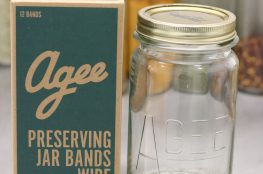Many years ago when I was working in England and living on a tight budget, I fed my family of three on less than £10 per day. All my menu planning was dictated by bargain bins, seasonal vegetables and food near its Best Before date.
We ate like kings on a beer budget, which incidentally even allowed for a dented can or two of the brown fizzy stuff. 10 pounds may sound like high society living to some, but coming from a Kiwi exchange rate, I ensured that food went a long, long way and quietly impressed myself at how creative I could be. It came down to common sense and discounts.
Best Before and Use By dates; what do they really mean?
Are these dates guidelines or serious warnings? It’s important to know what the rules are before breaking them!
Dairy, eggs, tinned baked beans and all types of pantry essentials have a date stamp on the outer package. There is a difference between Best Before and Use By although understandably, they can be confusing.

Best Before
The good news is that Best Before is basically that, a kind note that has little to do with food safety, rather food quality. Unopened ‘Best before’ product should not make you ill after the date given. It may deteriorate in colour and flavour but it shouldn’t make you sick. Sugary foods may crystalise; contents may begin to oxidise (making the parts that are exposed to air turn brownish); salsas may become more acidic; crackers can go soft; biscuits go stale; spices can dilute quite drastically; pasta may become brittle; and cheese will develop stronger flavours.
The nutritional table is only guaranteed until the Best Before date as nutrition begins to deteriorate over time. Basically, Best Before guarantees freshness. It is the ‘best quality before’ date.
If the pack is compromised (damaged or opened) then the Best Before date no longer applies. There are mold spores everywhere; in the air and on surfaces. Once a package is opened it is prone to cross contamination unless stored according to the instructions on the pack.
How long after the best before date is safe? Use your senses and sensibility. If the can is bulging, there is a foul smell or a pack is leaking – discard it.
Use By
You’ll find Use By dates most often on meats, seafood, meat substitutes and some chilled foods. Due to health and safety reasons may be dangerous to consume after their Use By date shown and can cause serious illness. This isn’t a kind warning, it is a direction! If you are not intending to eat it before the Use By date, freeze it immediately and follow safe freezing and storage methods. Otherwise, store well (refrigerate) and consume before this date.
If you are unlikely to consume it before this date you can freeze it. If you freeze it two days before its Use By date then you have two days to consume it once thawed.
It is good to know that Food Safety Standards are on your side. Food must not be sold after its Use By date.
What can you freeze and for how long?
Did you know you can freeze fresh egg out of shell and unopened milk, but don’t attempt freezing soft cheese or opened butter? Most things are good to freeze unopened – from meats and seafood, fresh vegetables of course and even yoghurt! Check this Storage Chart
The exception? There is always one. The only food that can have a different date mark on it is bread, which can be labelled with a ‘baked on’ or ‘baked for’ date if its shelf life is less than seven days. For more information check out Food Standards Australia New Zealand
There you go! Now when you reunite yourself with the suspicious jars at the back of the fridge you will have an idea as to what is safe and what needs to be avoided at all costs.




